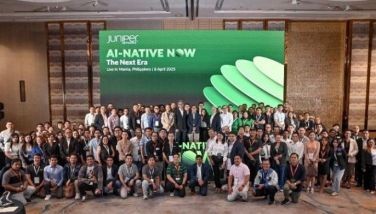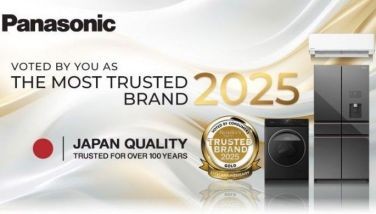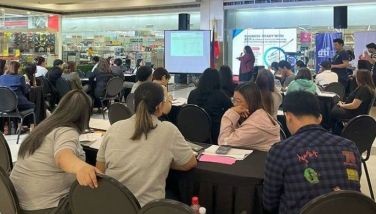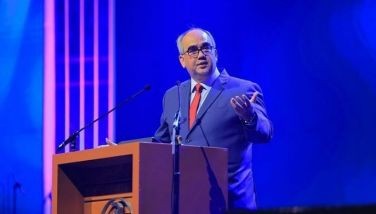BOI offers more perks for auto parts exporters

December 19, 2005 | 12:00am
To attract more participants to the Automotive Export Program (AEP), the Board of Investments (BOI) has modified the Implementing Rules and Regulations (IRR) of the program to give participants more flexibility in complying with the export requirements.
Under the more flexible rules, participants would now be allowed to meet export volume target from a combination of any of the four vehicle classifications instead of just one, provided that the minimum export value is still met.
The relaxation of the AEP IRR is intended to give assemblers more flexibility in addressing the market requirements.
Likewise, the change also takes into consideration recent developments that might require different marketing.
In the previous IRR of the AEP, it was expressly stated that "a program participant’s export performance in a specific category shall be evaluated independent of its performance in other categories."
The AEP IRR further stated that "a program participant will thus not be allowed to compensate for its failure to meet the minimum export volume or value in one category by applying exports of models or variants in other category.
The categories of completely built up (CBU) exports are the following: Regular CBU exports – these are direct CBU exports of high volume vehicles at a minimum total yearly volume of 10,000 units at a minimum FOB (freight on board) value of $5,000 per unit; developmental CBU exports – these are direct CBU export of developmental vehicles, which vehicles are completely new basic models designed to be produced in the Philippines primarily for exclusive export at least to ASEAN at a minimum total yearly volume of 5,000 units at minimum FOB value of $5,000; niche CBU exports – these are direct CBU exports of low volume niche vehicles, which vehicles are existing basic and/or variant models currently not assembled in the country, the existing facilities of which are to be relocated for exclusive assembly in the country at a minimum total yearly volume of 2,500 units at minimum FOB value of $10,000 per unit. Niche CBU exports will only be granted incentives from the time that the models of variant becomes exclusively assembled in the Philippines; and high value, low volume CBU exports – these are direct CBU exports of high end motor vehicles at a minimum volume of 2,500 units at a minimum FOB value of $20,000 per unit.
By allowing the export flexibility in the AEP, the government still stands to benefit since the AEP IRR still maintains that the grant of the $400 export credit would still be based per unit as a safeguard.
Thus, even if the export volume is reduced but the export value is still achieved, government would only have to extend the export credit based on the number of CBU units exported.
Under the more flexible rules, participants would now be allowed to meet export volume target from a combination of any of the four vehicle classifications instead of just one, provided that the minimum export value is still met.
The relaxation of the AEP IRR is intended to give assemblers more flexibility in addressing the market requirements.
Likewise, the change also takes into consideration recent developments that might require different marketing.
In the previous IRR of the AEP, it was expressly stated that "a program participant’s export performance in a specific category shall be evaluated independent of its performance in other categories."
The AEP IRR further stated that "a program participant will thus not be allowed to compensate for its failure to meet the minimum export volume or value in one category by applying exports of models or variants in other category.
The categories of completely built up (CBU) exports are the following: Regular CBU exports – these are direct CBU exports of high volume vehicles at a minimum total yearly volume of 10,000 units at a minimum FOB (freight on board) value of $5,000 per unit; developmental CBU exports – these are direct CBU export of developmental vehicles, which vehicles are completely new basic models designed to be produced in the Philippines primarily for exclusive export at least to ASEAN at a minimum total yearly volume of 5,000 units at minimum FOB value of $5,000; niche CBU exports – these are direct CBU exports of low volume niche vehicles, which vehicles are existing basic and/or variant models currently not assembled in the country, the existing facilities of which are to be relocated for exclusive assembly in the country at a minimum total yearly volume of 2,500 units at minimum FOB value of $10,000 per unit. Niche CBU exports will only be granted incentives from the time that the models of variant becomes exclusively assembled in the Philippines; and high value, low volume CBU exports – these are direct CBU exports of high end motor vehicles at a minimum volume of 2,500 units at a minimum FOB value of $20,000 per unit.
By allowing the export flexibility in the AEP, the government still stands to benefit since the AEP IRR still maintains that the grant of the $400 export credit would still be based per unit as a safeguard.
Thus, even if the export volume is reduced but the export value is still achieved, government would only have to extend the export credit based on the number of CBU units exported.
BrandSpace Articles
<
>
- Latest
- Trending
Trending
Latest
Trending
Latest
Recommended































